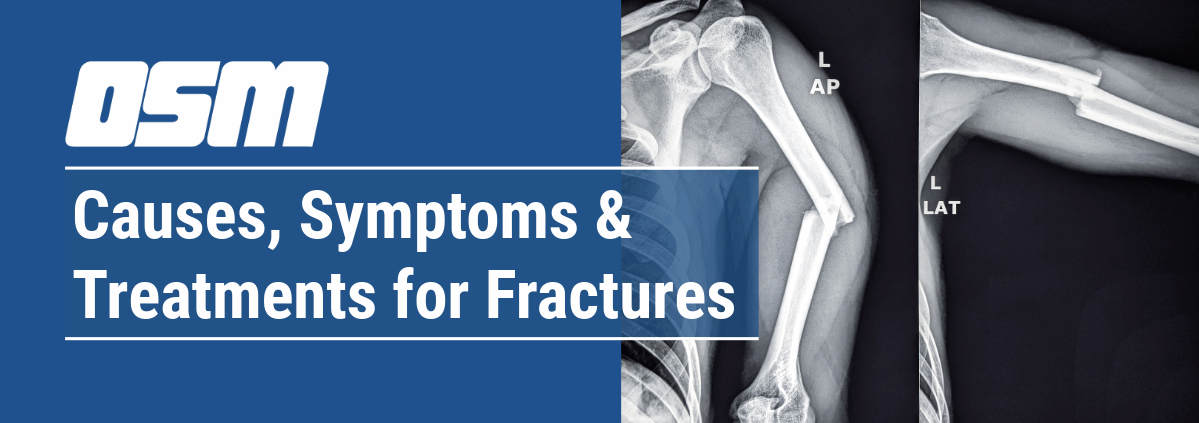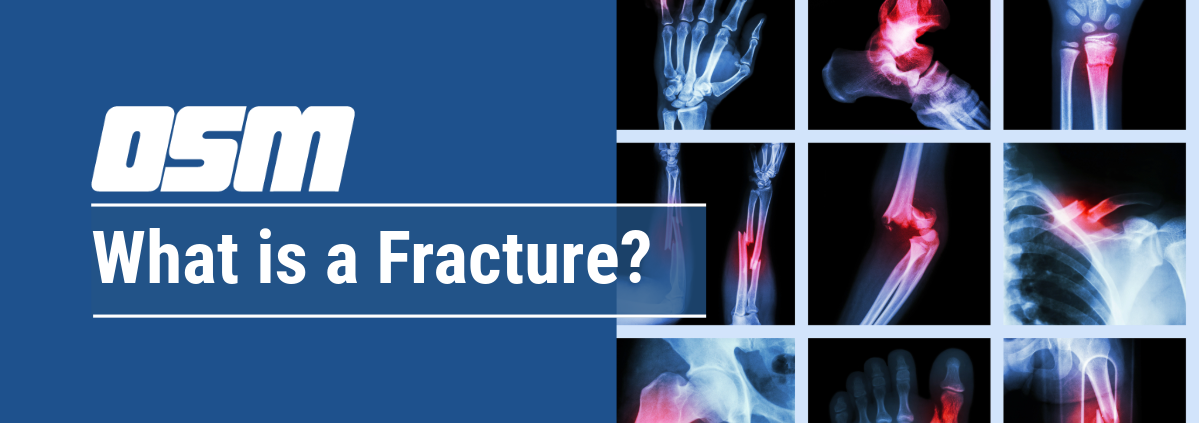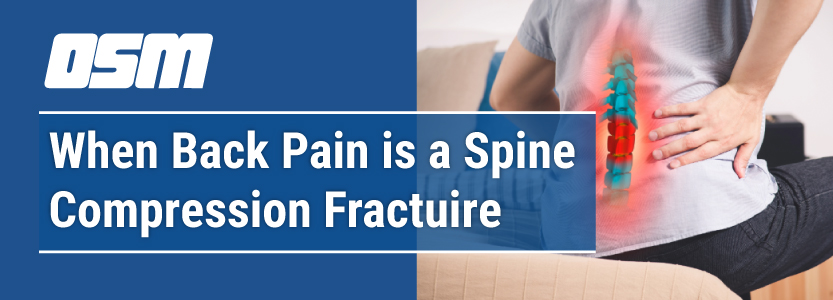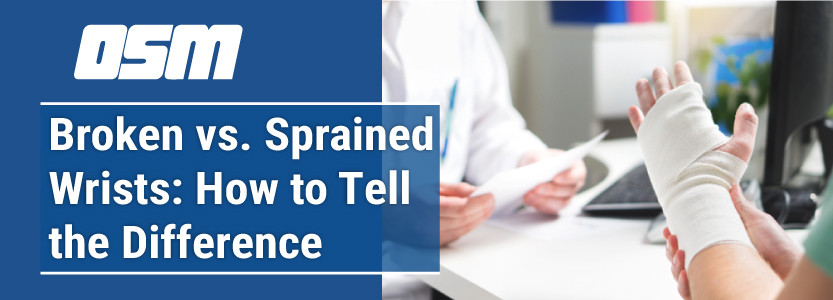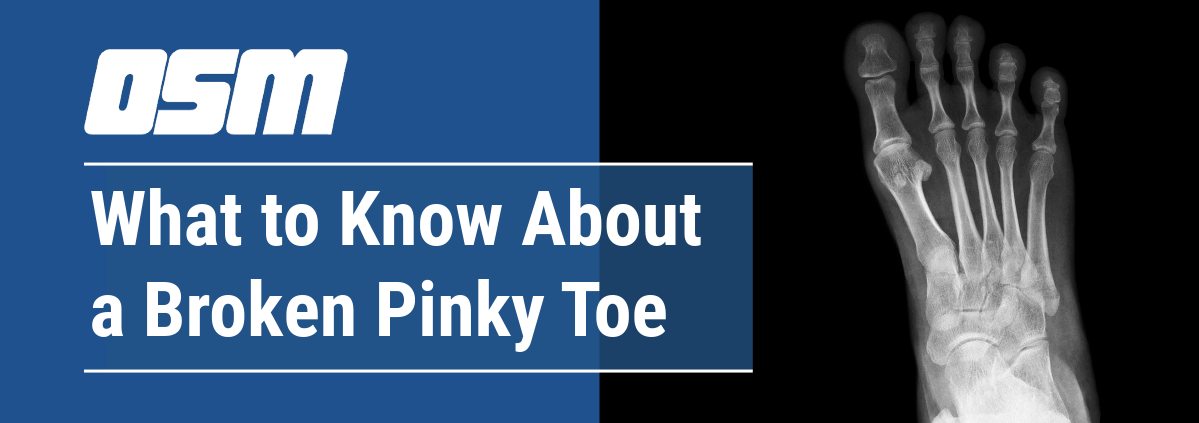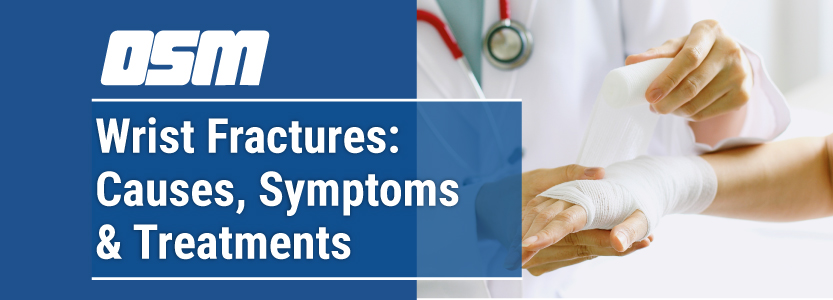Causes, Symptoms & Treatments for Fractures
Article featured on Johns Hopkins Medicine
What is a fracture?
A fracture is a partial or complete break in the bone. When a fracture happens, it’s classified as either open or closed:
- Open fracture (compound fracture): The bone pokes through the skin and can be seen. Or a deep wound exposes the bone through the skin.
- Closed fracture (simple fracture). The bone is broken, but the skin is intact.
Fractures have a variety of names. Here is a list of types that may happen:
- Greenstick. This is an incomplete break. A part of the bone is broken, causing the other side to bend.
- Transverse. The break is in a straight line across the bone.
- Spiral. The break spirals around the bone. This is common in a twisting injury.
- Oblique. The break is diagonal across the bone.
- Compression. The bone is crushed. This causes the broken bone to be wider or flatter in appearance.
- Comminuted. The bone has broken into 3 or more pieces. Fragments are present at the fracture site.
- Segmental. The same bone is broken in 2 places, so there is a “floating” piece of bone.
- Avulsion. The bone is broken near a tendon or ligament. A tendon or ligament pulls off a small piece of bone.
What causes fractures?
Fractures most often happen when more force is applied to the bone than the bone can take. Bones are weakest when they are twisted.
Bone fractures can be caused by falls, injury, or as a result of a direct hit or kick to the body.
Overuse or repetitive motions can tire muscles and put more pressure on the bone. This causes stress fractures. This is more common in athletes and military recruits.
Fractures can also be caused by diseases that weaken the bone. This includes osteoporosis or cancer in the bones.
What are the symptoms of a fracture?
Symptoms may be a bit different for each person. Symptoms of a broken or fractured bone may include:
- Sudden pain
- Trouble using or moving the injured area or nearby joints
- Unable to bear weight
- Swelling
- Obvious deformity
- Warmth, bruising, or redness
The symptoms of a broken bone may seem like other health conditions or problems. Always see a healthcare provider for a diagnosis.
How is a fracture diagnosed?
Your healthcare provider will take a full health history (including asking how the injury happened). You will also have a physical exam. Tests used for a fracture may include:
- X-ray. A diagnostic test that uses invisible electromagnetic energy beams to make pictures of internal tissues, bones, and organs on film.
- MRI. An imaging test that uses large magnets, radiofrequencies, and a computer to make detailed pictures of structures within the body.
- CT scan. This is an imaging test that uses X-rays and a computer to make detailed images of the body. A CT scan shows details of the bones, muscles, fat, and organs.
How is a fracture treated?
The goal of treatment is to put the pieces of bone back in place, control the pain, give the bone time to heal, prevent complications, and restore normal use of the fractured area.
Treatment may include:
- Splint or cast. This immobilizes the injured area to keep the bone in alignment. It protects the injured area from motion or use while the bone heals.
- Medicine. This may be needed to control pain.
- Traction. This is the use of a steady pulling action to stretch certain parts of the body in a certain direction. Traction often uses pulleys, strings, weights, and a metal frame attached over or on the bed. The purpose of traction is to stretch the muscles and tendons around the broken bone. This helps the bone ends to align and heal.
- Surgery. Surgery may be needed to put certain types of broken bones back into place. Sometimes internal fixation devices (metal rods or pins located inside the bone) or external fixation devices (metal rods or pins located outside of the body) are used to hold the bone fragments in place while they heal.
Fractures can take months to heal as broken bones “knit” back together when new bone is formed between the broken parts.
When should I call my healthcare provider?
See a healthcare provider any time you think you may have a broken bone.
An open fracture (one in which the bone comes through the skin so you can see it or a deep wound that exposes the bone through the skin) is considered an emergency. Get medical care right away for this type of fracture.
Any injury to the bones of the spine is also a medical emergency. These cause severe back pain and may cause nerve problems. These include numbness, tingling, weakness, or bowel and bladder problems. Call 911 if you think someone has a break in the bones of their spine.
Key points about fractures
- A fracture is a partial or complete break in the bone. There are many different types of fractures.
- Bone fractures are often caused by falls, injury, or because of a direct hit or kick to the body. Overuse or repetitive motions can cause stress fractures. So can diseases that weaken the bone.
- Symptoms include sudden pain, swelling, and trouble using or moving the injured area.
- The main goal of treatment is to put the pieces of bone back in place so the bone can heal. This can be done with a splint, cast, surgery, or traction.
- See a healthcare provider any time you think you may have a broken bone.
Next steps
Tips to help you get the most from a visit to your healthcare provider:
- Know the reason for your visit and what you want to happen.
- Before your visit, write down questions you want answered.
- Bring someone with you to help you ask questions and remember what your provider tells you.
- At the visit, write down the name of a new diagnosis and any new medicines, treatments, or tests. Also write down any new instructions your provider gives you.
- Know why a new medicine or treatment is prescribed and how it will help you. Also know what the side effects are.
- Ask if your condition can be treated in other ways.
- Know why a test or procedure is recommended and what the results could mean.
- Know what to expect if you do not take the medicine or have the test or procedure.
- If you have a follow-up appointment, write down the date, time, and purpose for that visit.
- Know how you can contact your provider if you have questions.
The Orthopedic & Sports Medicine Center of Oregon is an award-winning, board-certified orthopedic group located in downtown Portland Oregon. We utilize both surgical and nonsurgical means to treat musculoskeletal trauma, spine diseases, foot and ankle conditions, sports injuries, degenerative diseases, infections, tumors and congenital disorders.
Our mission is to return our patients back to pain-free mobility and full strength as quickly and painlessly as possible using both surgical and non-surgical orthopedic procedures.
Our expert physicians provide leading-edge, comprehensive care in the diagnosis and treatment of orthopedic conditions, including total joint replacement and sports medicine. We apply the latest state-of-the-art techniques in order to return our patients to their active lifestyle.
If you’re looking for compassionate, expert orthopedic and podiatric surgeons in Portland Oregon, contact OSM today.
Phone:
503-224-8399
Address
1515 NW 18th Ave, 3rd Floor
Portland, OR 97209
Hours
Monday–Friday
8:00am – 4:30pm

